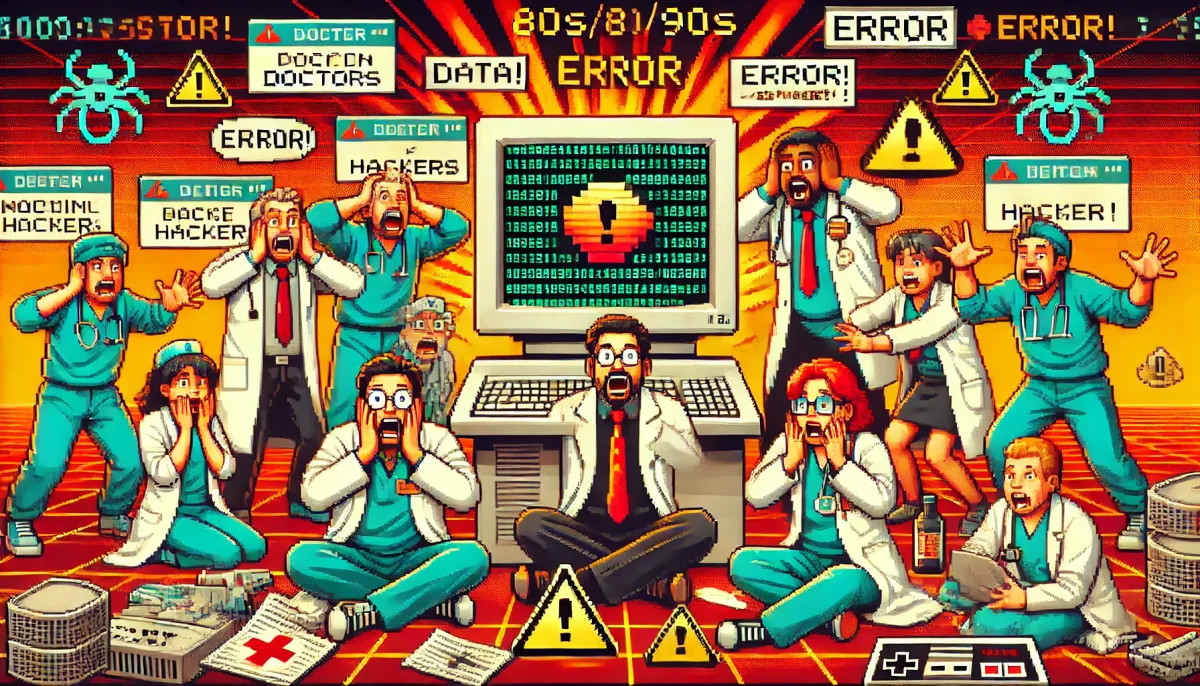BREACH: CMS -- Your DollarBucks at Work
The recent CMS (Centers for Medicare & Medicaid Services) data breach is a significant cybersecurity incident that has impacted nearly one million Medicare beneficiaries.

Research Summary
The recent CMS (Centers for Medicare & Medicaid Services) data breach is a significant cybersecurity incident that has impacted nearly one million Medicare beneficiaries. This breach involved the compromise of protected health information (PHI) and personally identifiable information (PII) due to a vulnerability in the MOVEit file transfer software used by Wisconsin Physicians Service Insurance Corporation (WPS), a CMS contractor. The breach has raised concerns about the security of sensitive healthcare data and the potential for identity theft and fraud.
Assessment Rating
Rating: HIGH
The assessment rating for this breach is HIGH due to the large scale of the impact, the sensitivity of the data involved, and the potential for significant harm to the affected individuals. The breach exposed critical personal and health information, which can be exploited for identity theft, financial fraud, and other malicious activities.
Findings
-
Motivations Behind the Breach:
The primary motivation behind the breach appears to be the exploitation of sensitive personal and health information for financial gain. Cybercriminals often target healthcare data due to its high value on the black market. -
Impact of the Breach:
The breach potentially impacted 946,801 individuals, exposing their PHI and PII. This includes names, Social Security Numbers, dates of birth, mailing addresses, gender, hospital account numbers, dates of service, Medicare Beneficiary Identifiers (MBI), and Health Insurance Claim Numbers. -
Timeline of the Breach:
- The vulnerability in the MOVEit software was exploited between May 27 and May 31, 2023.
- Progress Software, the developer of MOVEit, disclosed the vulnerability on May 31, 2023, and released a patch.
- WPS applied the patch in early June 2023 and initially found no evidence of data exfiltration.
- In May 2024, new information prompted WPS to conduct a further review, revealing that data had been exfiltrated before the patch was applied.
- WPS notified CMS of the breach on July 8, 2024.
-
Techniques Used in the Breach:
The breach involved exploiting a vulnerability in the MOVEit file transfer software, which allowed unauthorized access to the data being transferred. -
Vulnerabilities Exploited in the Breach:
The specific vulnerability in the MOVEit software that was exploited has not been detailed in public reports, but it allowed unauthorized third parties to access and exfiltrate data. -
Tools Used in the Breach:
The primary tool involved was the MOVEit file transfer software, which had a security vulnerability that was exploited. -
Malware Used in the Breach:
There is no specific mention of malware being used in this breach. The exploitation was primarily through a software vulnerability. -
Data Exfiltrated in the Breach:
The data exfiltrated included PHI and PII such as names, Social Security Numbers, dates of birth, mailing addresses, gender, hospital account numbers, dates of service, Medicare Beneficiary Identifiers (MBI), and Health Insurance Claim Numbers. -
Organizations Affected by the Breach:
The primary organization affected is CMS, along with nearly one million Medicare beneficiaries whose data was compromised. -
Organizations Responsible for the Breach:
The breach was facilitated by a vulnerability in the MOVEit software developed by Progress Software. WPS, a CMS contractor, was using this software for file transfers. -
Organizations that Discovered the Breach:
WPS discovered the breach during a review in May 2024, following new information that prompted a re-evaluation of the MOVEit file transfer system. -
Related Breaches of Note:
The MOVEit vulnerability has been linked to data breaches at multiple organizations across the United States, indicating a widespread issue with this software.
Lessons Learned
What can be learned from this breach?
-
Importance of Timely Patching:
The breach underscores the critical importance of timely patching of known vulnerabilities. Although WPS applied the patch released by Progress Software, the initial delay allowed for data exfiltration. -
Continuous Monitoring and Review:
Continuous monitoring and periodic reviews of systems, even after applying patches, are essential to detect any signs of compromise that may have occurred before the patch was applied. -
Third-Party Risk Management:
Organizations must rigorously assess and manage the security risks associated with third-party software and services. This includes conducting thorough security evaluations and ensuring that third-party vendors adhere to stringent security standards.
What can be done to prevent this breach in the future?
-
Implementing Robust Patch Management:
Establishing a robust patch management process to ensure that all software vulnerabilities are promptly identified and patched. -
Enhancing Third-Party Security Assessments:
Conducting comprehensive security assessments of third-party vendors and their software to identify and mitigate potential risks. -
Adopting Zero Trust Architecture:
Implementing a Zero Trust security model that continuously verifies the identity and integrity of users and devices, regardless of their location within or outside the network.
What can be done to detect this breach in the future?
-
Advanced Threat Detection Tools:
Deploying advanced threat detection tools and techniques, such as anomaly detection, to identify unusual activities that may indicate a breach. -
Regular Security Audits:
Conducting regular security audits and penetration testing to identify and address vulnerabilities before they can be exploited. -
Real-Time Monitoring and Alerts:
Implementing real-time monitoring and alerting systems to quickly detect and respond to suspicious activities.
Associated Threat Actors
There is no specific information available about the threat actors responsible for this breach. However, given the nature of the data involved, it is likely that financially motivated cybercriminals were behind the attack.
Related Breaches
The MOVEit vulnerability has been linked to data breaches at multiple organizations, indicating a widespread issue with this software. Specific details about other affected organizations are not provided in the available information.
References
- Centers for Medicare & Medicaid Services (CMS) Press Release: CMS Notifies Individuals Potentially Impacted by Data Breach
- TechTarget Article: CMS notifies 946K individuals of third-party data breach
- Healthcare Dive Article: CMS says data breach at contractor could affect nearly 1M Medicare beneficiaries
This comprehensive analysis provides a detailed understanding of the recent CMS data breach, its impact, and the lessons learned. By implementing the recommended preventive and detection measures, organizations can enhance their security posture and mitigate the risk of similar breaches in the future.
Forecast
Short-Term Forecast (3-6 months)
Increased Focus on Third-Party Risk Management
- Organizations will prioritize evaluating and managing risks associated with third-party vendors, particularly those providing critical software and services. This will include more rigorous security assessments and audits.
- Reference: The Rising Tide of Software Supply Chain Attacks - Dark Reading
Enhanced Patch Management Practices
- There will be a heightened emphasis on timely patching of known vulnerabilities. Organizations will implement more robust patch management processes to ensure vulnerabilities are addressed promptly.
- Reference: CISA Known Exploited Vulnerabilities Catalog
Adoption of Advanced Threat Detection Tools
- Deployment of advanced threat detection tools, such as anomaly detection and AI-based monitoring systems, will increase to identify unusual activities that may indicate a breach.
Increased Regulatory Scrutiny and Compliance
- Regulatory bodies will increase scrutiny on organizations handling sensitive data, leading to stricter compliance requirements and potential penalties for non-compliance.
- Reference: 2024 Data Breach Investigations Report - Verizon
Long-Term Forecast (12-24 months)
Widespread Adoption of Zero Trust Architecture
- Organizations will increasingly adopt Zero Trust security models, continuously verifying the identity and integrity of users and devices, regardless of their location within or outside the network.
- Reference: Zero Trust Security Model - NIST
Development of More Secure Software Solutions
- Software developers will focus on creating more secure solutions, incorporating security by design principles to reduce vulnerabilities in their products.
- Reference: Top Data Breaches in 2024 [Month-wise] - Strobes Security
Increased Investment in Cybersecurity Training and Awareness
- Organizations will invest more in cybersecurity training and awareness programs for employees to reduce the risk of human error leading to breaches.
- Reference: Cybersecurity Training Programs - Cyber Management Alliance
Evolution of Cyber Insurance Market
- The cyber insurance market will evolve to offer more comprehensive coverage and better risk assessment tools, helping organizations mitigate financial losses from breaches.
- Reference: Black Hat USA 2024: How cyber insurance is shaping cybersecurity strategies
AlphaHunt
Get questions like this? Does it take a chunks out of your day? Would you rather be working on more interesting intelligence tasks? Would you like help with the research?
This baseline report was thoughtfully researched and took 5 minutes.. It's meant to be a rough draft for you to enhance with the unique insights that make you an invaluable analyst. We just did the grunt work..
Did this help you? Forward it to a friend!
(c) 2024 CSIRT Gadgets, LLC
License - CC BY-SA 4.0





